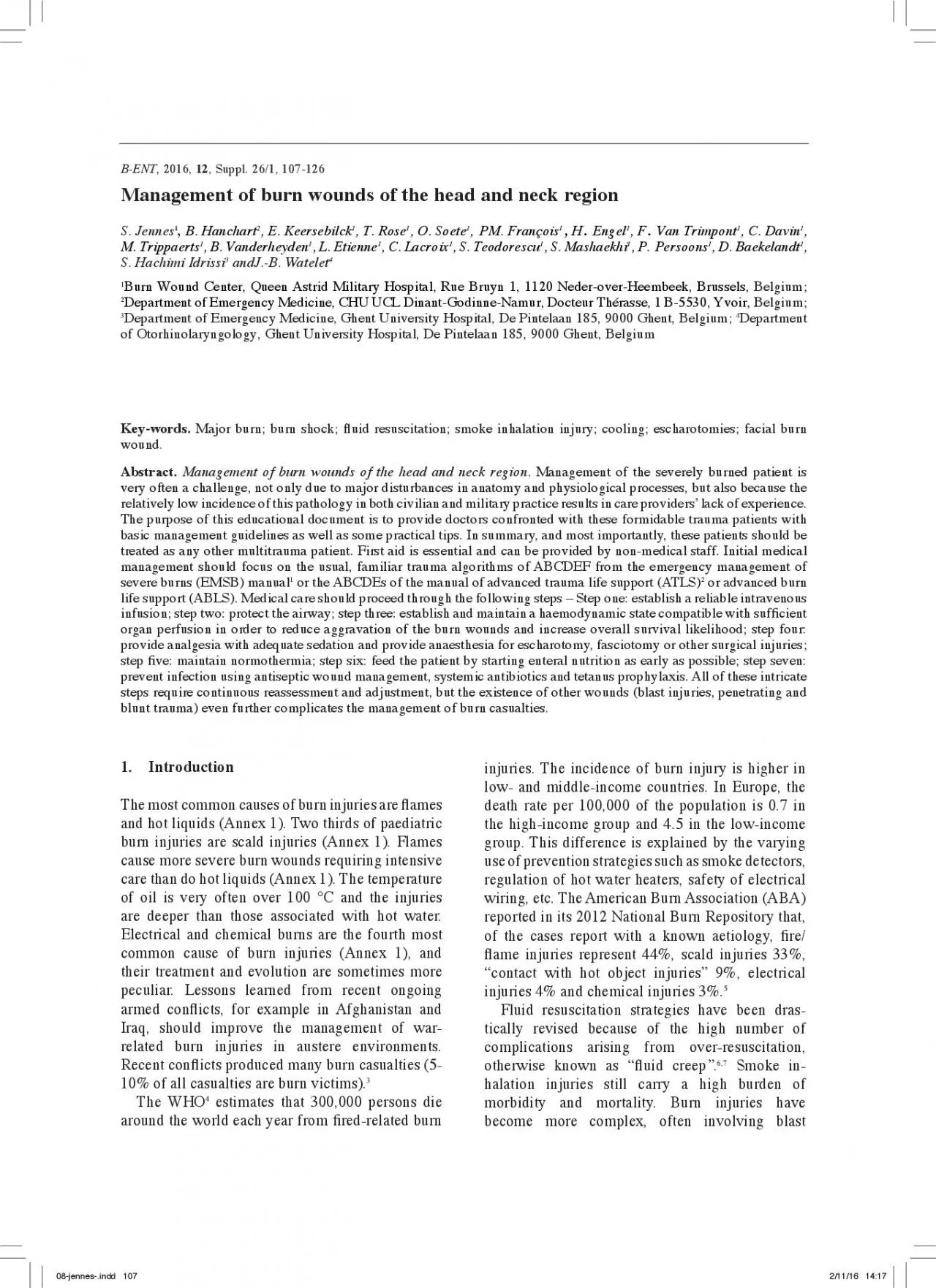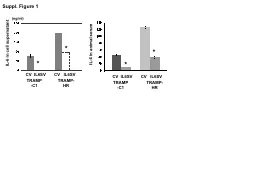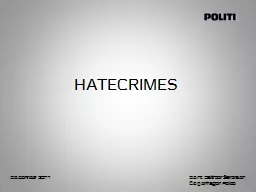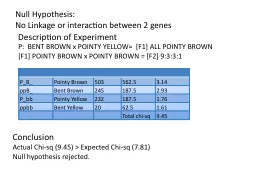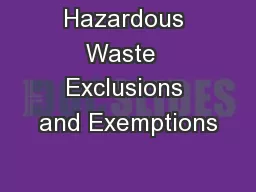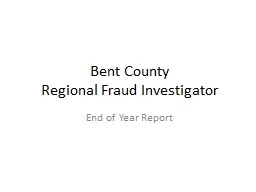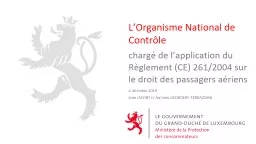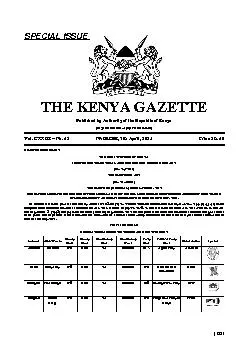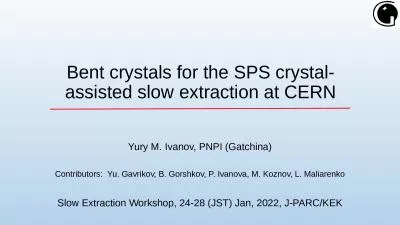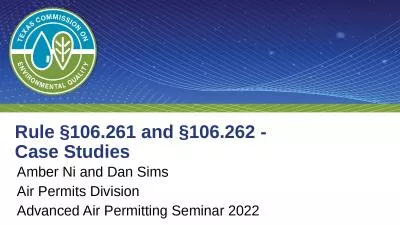PDF-BENT 2016 12 Suppl 261 107126
Author : nicole | Published Date : 2022-08-20
The most common causes of burn injuries are x0066006Cames and hot liquids Annex 1 Two thirds of paediatric burn injuries are scald injuries Annex 1 Flames cause
Presentation Embed Code
Download Presentation
Download Presentation The PPT/PDF document "BENT 2016 12 Suppl 261 107126" is the property of its rightful owner. Permission is granted to download and print the materials on this website for personal, non-commercial use only, and to display it on your personal computer provided you do not modify the materials and that you retain all copyright notices contained in the materials. By downloading content from our website, you accept the terms of this agreement.
BENT 2016 12 Suppl 261 107126: Transcript
Download Rules Of Document
"BENT 2016 12 Suppl 261 107126"The content belongs to its owner. You may download and print it for personal use, without modification, and keep all copyright notices. By downloading, you agree to these terms.
Related Documents

